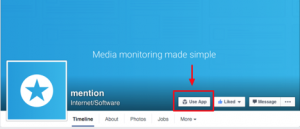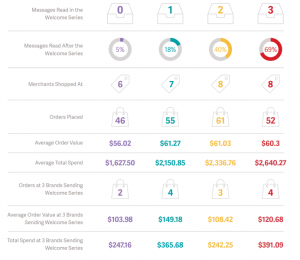Part Four of a multi-part series diving deep into tag management — what it is, how it works, how to find a partner and how you can benefit.
Josh Dreller on September 25, 2014

There are thousands of digital marketing services fueling the fast-paced, multi-channel digital economy. Their tags populate billions of web pages, resulting in trillions of one-off data connections, all of which require managing and maintenance.
Mind-boggling, right? A typical enterprise website, for example, may have anywhere from 50 to 150 third-party tags on the site at any time, plus a high volume of fourth-party tags piggybacking on them.
For site owners and digital marketers, this scenario spells full-on data chaos, not to mention a performance drag on their websites.
There are many pain points associated with the proliferation of third-party tags.
Managing all these tags is a well-known operational mess. Tags create friction between marketers and IT. The process of deploying tags can delay new marketing campaigns by weeks or months. They slow page-load times, degrade the customer experience, and even put data privacy at risk.
No wonder tag management systems (TMSs) have become a critical solution in the marketing technology stack. The right TMS should free marketers from navigating cumbersome IT processes, and allow them to focus on engaging customers instead.
In order to choose the right TMS for your organization, it’s necessary to determine what you’re seeking to accomplish, and to understand that competing vendors have different areas of focus. This type of audit will also help you decide whether a free solution is adequate for your organization or whether you need an enterprise solution.
Once you’ve determined which is best for you, below are some critical questions to help you sort through the options and identify the best vendor for your needs.
1. Is The System Simple To Use?
Ease of use is a key characteristic: a TMS should put you in the driver’s seat and make your marketing more agile. A TMS should provide a single point of integration to manage all of the digital marketing and analytics services on your site.
The interface should be friendly to non-technical users, allowing them to add and remove tags in seconds, without waiting for help from IT. You should be able to configure business rules that specify how data is collected and shared on your site.
In evaluating potential TMS partners, you should consider how well each would plug into your current process.
If you work at a media agency, you’ll want to understand how it affects your launch and optimization processes. Brand marketers will want to consider all the departments that will have end-users on the TMS and the ‘permissions’ capabilities of each (more on this later).
If your business is global, look for a tool with the flexibility to configure privacy policies that allow users to opt out. With regulations in flux, you shouldn’t have to redo your website every time the law changes.
Keep in mind that it’s very difficult to evaluate the ease-of-use of a user interface by spending a few minutes with it in a demo. It’s a good idea to reach out to current clients of the TMS vendors you’re evaluating to get their feedback. Ask the TMS vendors to provide you with contacts.
2. How Does The System Improve Site Performance & The Consumer’s User Experience?
How a TMS affects your site performance should be a major factor in your evaluation. Ask vendors to detail how their technology impacts the site user experience through case studies and/or demonstrations.
Focus on key metrics such as page-load times, volume of server calls required per page load, and average cumulative latency (time required for third-party tags to load — usually measured in milliseconds.) A fast-loading site can reduce your user drop-off rate, which can then increase revenue generated through online sales.
When you think about what a TMS does, it’s quite impressive. The technology has to: map and group pages across your entire site(s); control a system that will easily pull dynamic values of your site(s); understand what page a user is on; determine what appropriate tags to fire and data to collect; and allow you to have quick and easy control over all these aspects through a UI and more!
A TMS manages these capabilities through lines of complex JavaScript code. In the world of tags, the concept of putting someone else’s code on your site in order to start using a new digital marketing or analytics service is the standard. But if you were to ask any marketer or IT pro whether they want to put more third-party code on their site or less, the answer will always be less.
This important point to remember when comparing TMSs. Some vendors put their JavaScript library in the cloud rather than on their clients’ website, which will have site performance implications.
3. Can Your System Easily Accommodate Multiple User Groups & Permission Settings?
A TMS should be an organizational tool. Consider all the different departments and types of users (now and in the future) that will utilize the platform. (Examples: media agency, analytics consultants, webmaster, etc.)
The system will probably have internal and external users, some that are non-technical and some that are highly technical. It’s a good idea to seek feedback on usability from all possible TMS user groups. Ask about the features in place to accommodate these various user groups as well as for controlling levels of access to the platform.
4. What Type Of Services & Support Can I Expect?
Look for a vendor whose account management team has deep backgrounds in data and analytics.
You should expect to be matched with an account manager that will learn your business, guide you through implementation, and work with you to set KPIs for measuring success. Your account manager should stay engaged over the long-haul to make sure the solution continues to meet your evolving needs.
You’ll spend more if your organization requires a high level of service and support. Consider testing a premium level of support for the first few months of using a system, and see if the extra expense is worth it to you.
5. Does The Vendor Have Experience In Your Industry?
It’s important to select a vendor with experience that’s relevant for your organization, one that will understand your situation, and is evolving its data collection abilities to meet the constantly changing needs of its clients.
With the proliferation of consumer engagement data, many brands are looking to their TMS vendors to become strategic partners and data consultants that will help them tap more advanced, data-driven marketing opportunities. It will benefit you to look for a TMS that has executed complex and unique solutions that are most relevant to your company.
For example, are you looking to leverage your first-party data to explore new cross-channel marketing activities? If so, ask vendors about their specific experience in providing cross-channel solutions that align with your overall marketing goals. You may be aiming to generate leads, build brand awareness or drive conversions.
The cross-channel approach that’s right for you may differ greatly depending on your specific objectives.
6. Does The TMS Have A Vision For The Future Of Marketing Data?
TMS solutions are evolving. They are addressing data challenges beyond tags and many of the independent ones have developed unique focuses of their own, i.e., analytics-focused, cross channel, and universal ID.
The TMS solution that you partner with should not only solve today’s problems, it should be prepared to help you with opportunities that unfold in the future. During the evaluation process, ask each vendor to explain how their product vision aligns with your organizational goals over the next three to five years.
7. Does The TMS Have A Technology Platform That Is Ecosystem-Neutral?
A TMS can put your company in the position to instantly switch out marketing technologies. Choosing a TMS that is eco-system neutral – whose technology is compatible with any other technology vendor — will give you the flexibility to change technology solutions whenever you choose. Neutrality enables you quickly take one vendor’s tags off your site and add another vendor’s on.
Not all TMSs are eco-system neutral, however. Through acquisitions and mergers, some of the biggest marketing technology companies have added a TMS to their ‘stack’ of proprietary software offerings. If you choose to partner with a TMS that has ties to a larger ‘stack,’ you should evaluate the impact it might have on your ability to integrate the marketing technologies in your own stack.
8. Does The System Lay A Foundation For Cross-Channel Marketing Activities?
For many marketers, getting data collection under control is the first step to integrating their marketing activities across channels, such as the web, email, mobile, SEO, social media, call centers, in-store, and across devices, such as laptops, smartphones, and tablets. After all, consumers don’t think in terms of channels — they expect a seamless, cohesive experience as they move back and forth among these various options.
Most advanced TMS companies are starting to offer solutions that go beyond browser-based data collection. Mobile SDK’s, API data feeds, and other data-onboarding options are becoming standard offerings.
It’s important to be just as detailed in your evaluation of these new data collection methodologies as you are in your evaluation of browser-data collection. As mobile usage skyrockets and cross-channel marketing activities accelerate, they will soon become a large percentage of the services you are receiving from your TMS.
For more on Tag Management, see other posts in this series:
- Part 1: The Complexity & Confusion Of Tracking Without Tag Management
- Part 2: What Is Tag Management And Why Should You Care?
- Part 3: Why Tag Management Isn’t Really About Web Site Analytics Anymore
- Part 4: 8 Questions To Ask Before Choosing A Tag Management System
(368)




